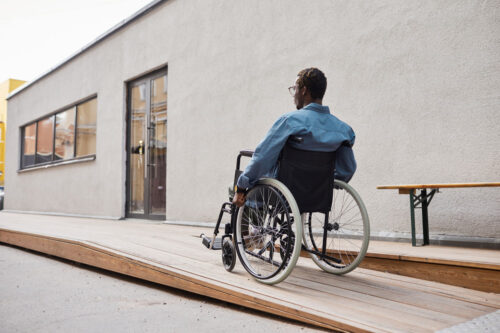Exploring Different Ramp Materials: Which One Is Right for Your Accessibility Needs in Ottawa?

Accessibility is a top priority for individuals with mobility challenges, their families, and the wider community in Ottawa. One of the most crucial components of an accessible environment is a well-designed and functional ramp. With a plethora of materials available in the market, it can be challenging to determine which material is best suited to your unique needs. Analyzing the pros and cons of different materials will help you make an informed decision and invest in a long-lasting, efficient accessibility solution for your home or business.
At Regional Ramp, we understand the importance of making the right choice when it comes to ramp materials. Our team of experts is committed to supporting you every step of the way, offering professional guidance, a wide range of high-quality products, and top-notch installation services. Join us as we explore the world of ramp materials and help you make a well-informed decision that will contribute to an enhanced sense of independence, confidence, and accessibility for wheelchair users in Ottawa.
Aluminum Ramps: Lightweight and Low-Maintenance
Aluminum ramps are a popular choice due to their lightweight nature and resistance to corrosion. They are an excellent option for those seeking a durable, low-maintenance solution for their accessibility needs. Here are some advantages and drawbacks of aluminum ramps:
Pros:
– Lightweight, making them easy to handle, transport, and install
– Resistance to rust and corrosion, ensuring durability even in harsh weather conditions
– Non-slip textured surfaces for increased safety
– Adjustable and modular options for maximum versatility
Cons:
– Can be more expensive than other materials
– Not suitable for extremely heavy weight loads
Wooden Ramps: Aesthetically Pleasing and Customizable
Wooden ramps offer a natural and warm aesthetic, allowing them to blend well with the surroundings. They provide homeowners with the ability to customize their ramps to match the style and design of their property. Here are some pros and cons of wooden ramps:
Pros:
– Visually appealing, with a natural look that can complement many homes
– Highly customizable in terms of design, shape, and size
– Affordable, making them a cost-effective option for many
Cons:
– Require regular maintenance, including staining and sealing, to protect against weather damage
– Susceptible to rot and damage from insects, which can compromise the ramp’s structural integrity
– Can be slippery when wet, making it essential to ensure proper grip and safety features
Steel Ramps: Strong and Sturdy
Steel ramps are known for their strength and durability, making them an ideal choice for heavy-duty use. They can support significant weight loads and last for years with proper care and maintenance. Here are the advantages and drawbacks of steel ramps:
Pros:
– Incredibly strong and able to support heavy weight loads
– Durable, with the potential to last for many years when maintained correctly
– Can be coated with non-slip materials to improve safety and grip
Cons:
– Heavy, making them challenging to transport and install
– Require regular maintenance to prevent rust and corrosion
– Can be more expensive than other materials
Concrete Ramps: Permanent and Low-Maintenance
For those seeking a permanent accessibility solution, concrete ramps are a viable option. They are low-maintenance, visually appealing, and can be customized to suit the property’s design. Here are the pros and cons of concrete ramps:
Pros:
– Permanent solution, providing long-lasting accessibility without the need for frequent maintenance or adjustments
– Resistant to rust, corrosion, and weather damage
– Customizable, allowing for various designs and finishes to suit the property’s style
Cons:
– Expensive, as installation requires professional expertise and access to specific tools and equipment
– Not easily adjustable or portable, making changes or relocation difficult
Factors to Consider When Selecting Ramp Materials
Before deciding on a ramp material, consider the following factors to ensure that the chosen solution aligns with your unique requirements:
- Budget: Establish a budget for your ramp project, considering factors such as material cost, installation, and maintenance.
- Maintenance: Evaluate how much time and effort you are willing to invest in maintaining the ramp, as some materials require more maintenance than others.
- Aesthetics: Determine the desired appearance of your ramp and how well it needs to blend with your property’s design.
- Weight Capacity: Assess the weight capacity required for the ramp, taking into account the weight of both the user and their mobility device.
- Adjustability and Portability: Decide if the ramp needs to be adjustable or portable and if relocation or alterations may be necessary in the future.
Conclusion
With a wide range of materials available, selecting the perfect ramp for your accessibility needs in Ottawa can be overwhelming. By carefully considering the pros and cons of each material and evaluating factors such as budget, maintenance, aesthetics, weight capacity, and adaptability, you can make an informed decision tailored to your unique requirements.
At Regional Ramp, we are committed to guiding you through the process of choosing the right ramp material for your needs and ensuring a seamless installation experience. Contact our team of experts today to discuss your accessibility requirements, and let us help you find the ideal accessible ramp solution for your Ottawa home.

